
How about a cocktail inspired by a taco, sweet potato casserole, or avocado? Or, what about a cocktail that features shellfish, feta, pandan leaf, eggplant, fermented meat marinade, ube, or li hing mui powder?
According to Jourdain Blanchette, co-owner of BARCOA Agaveria in Phoenix, Ariz., savory dishes being reimagined as cocktails are quite popular.
“There’s a big market to drink the way you eat,” Blanchette said, “better ingredients, more umami flavors, and not as much perceived sugar. Maybe it feels healthier to drink a savory cocktail, or it’s a new element that many guests haven’t yet tried.”
At BARCOA Agaveria, Blanchette and Co-owner Nick Fiorini created Campo de Coles, a cocktail that’s loosely inspired by a street taco. It features Uruapan Charanda, Naran Mezcal, a house-made red cabbage cordial, black walnut bitters, and sage leaf.
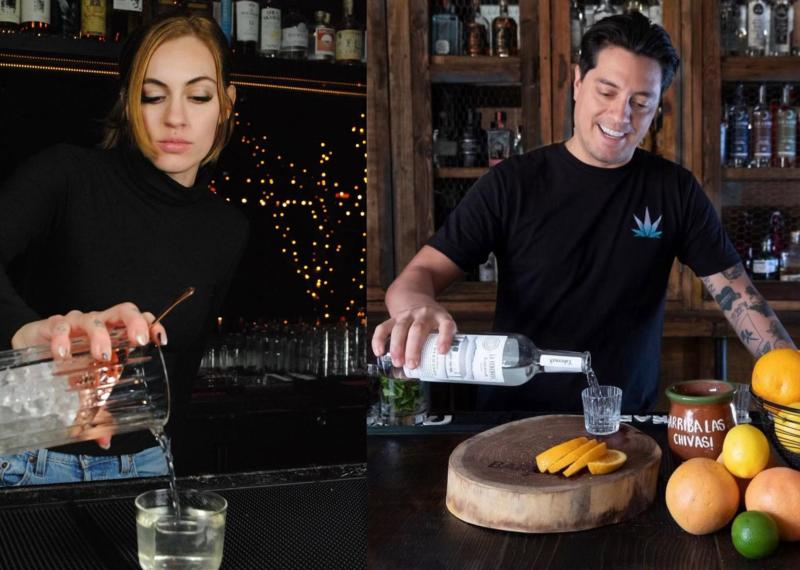
“Red cabbage is a common garnish on street tacos, and we wanted to create a cocktail that spoke to the earthy, vegetal quality of the vegetable,” said Fiorini. “So, we make a cordial out of it, and it’s the star of the show in this drink. Slightly smoky mezcal from Oaxaca and a rum from Michoacán are the other base spirits, while walnut bitters balance the cocktail.”
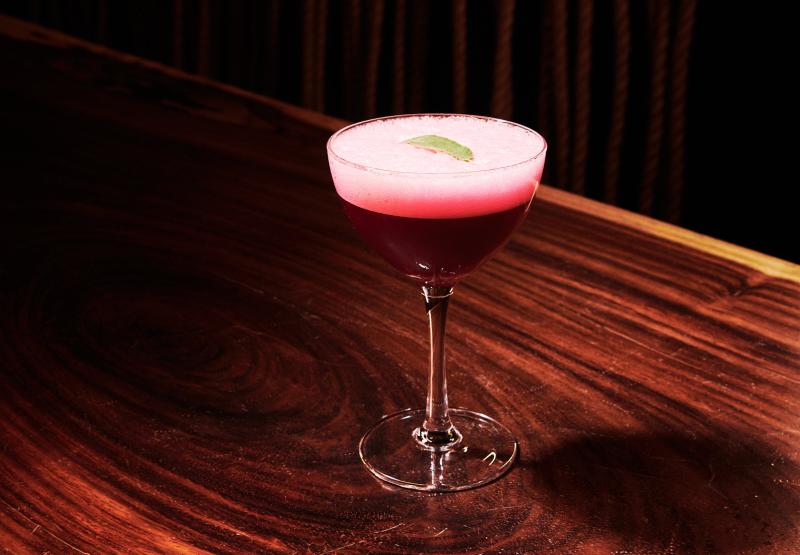
Fiorini said industry pros shouldn’t think about culinary cocktails in a “straight line.”
“We obviously don’t want to create drinks that taste like tacos,” Fiorini said, “but we’re interested in the idea of working with some of those flavors and ingredients and going at them in a new and exciting way.”
Of course, a culinary cocktail doesn’t have to be savory – it can be sweet or inspired by a dessert. For example, Ziv Scherman, the food and beverage director for Blue Jay Bistro, Littleton, N.C., is working on a sweet potato cocktail, similar to the taste of a sweet potato casserole or a crème brûlée. They also featured The Graceland, with banana Jameson (infused in-house), Skrewball, banana liqueur, bacon, and flambéed banana, among other cocktails.
“Diners expect to see a ground cherry in a sauce or elsewhere on the plate – instead, we put it in their glass in our Ground Cherry and Pineapple Margarita,” said Scherman. “The cocktail was specifically curated to pair with a chicken tinga dish.”
Culinary Cocktails – What’s Popular? What Ingredients Are Being Used Right Now?
George Wright, beverage director at Sắp Sửa in Denver, Colo., said culinary cocktails with complexity and layers to their flavor profile are attracting attention from guests.
“Bartenders are pushing cocktails to match the level of flavor you would taste in a dish at a restaurant,” Wright said. “As guests search for more savory and umami cocktails, we see the use of herbs like dill, mushrooms, gochujang, sesame, fish sauce being incorporated into cocktails. Fermentation, especially lacto fermentation, is a big technique for adding more body and depth to cocktails.”
Wright said he’s looking forward to experimenting with pandan leaves for their aromatics, shittake mushrooms for their umami quality, and fermentation for complexity.
Dirty Sue Premium Olive Juice Founder and Owner Eric “ET” Tecosky said he’s seeing more savory cocktails pop up in bars.
“First it was farm-to-table and now kitchen-to-bar seems to be the thing,” noted Tecosky. “This started years ago with baby steps and now it’s really happening. Truffle-infused spirits. Avocado, cheese, corn, turmeric – kitchen ingredients popping up in cocktails.”
Alejandro Flores, the bar manager at San Francisco’s Movida Lounge – where they offer a variety of cocktails and mocktails that include ingredients from Mexico and Iran – believes that guests are seeking new flavors. “They want to question what it is they are drinking and what it is composed of,” he said. “They look for aromas, textures, and an Insta-worthy cocktail.”
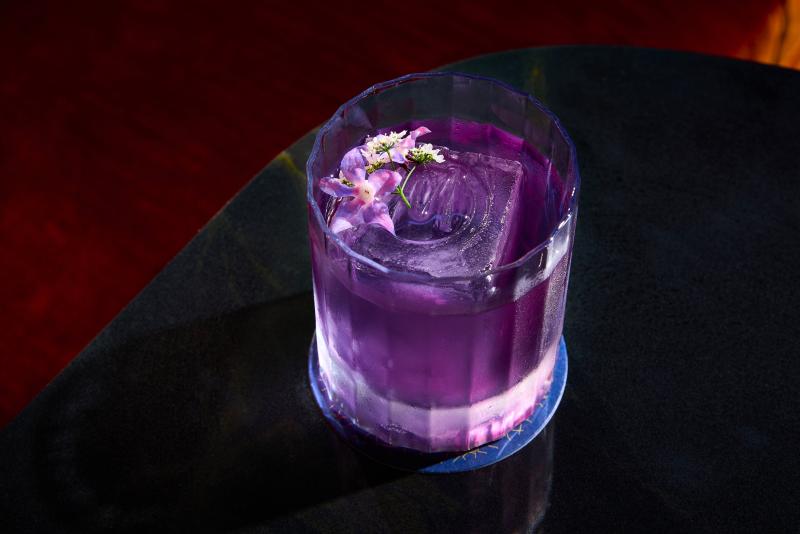
At Lona Cocina & Tequileria, Ft. Lauderdale, Fla., The Spicy Avocado is quite popular. It’s a spicy margarita with ghost pepper tequila, fresh lime juice, natural agave, and mashed avocado.
“Customers want an unexpected balance from a culinary cocktail,” shared Marla White, lead bartender at Lona Cocina & Tequileria. She said they want something that has a new mouthfeel or texture that they haven’t had before. “The Spicy Avocado accomplishes this through the natural oils in the avocado,” she explained. “When the ingredients are shaken together, it breaks down the avocado, resulting in a delicious cocktail that has a creamy texture. The avocado also cuts the spiciness from the ghost peppers, creating that exceptional imaginary level of ‘I want spicy, but not too spicy’ request from your customer.”
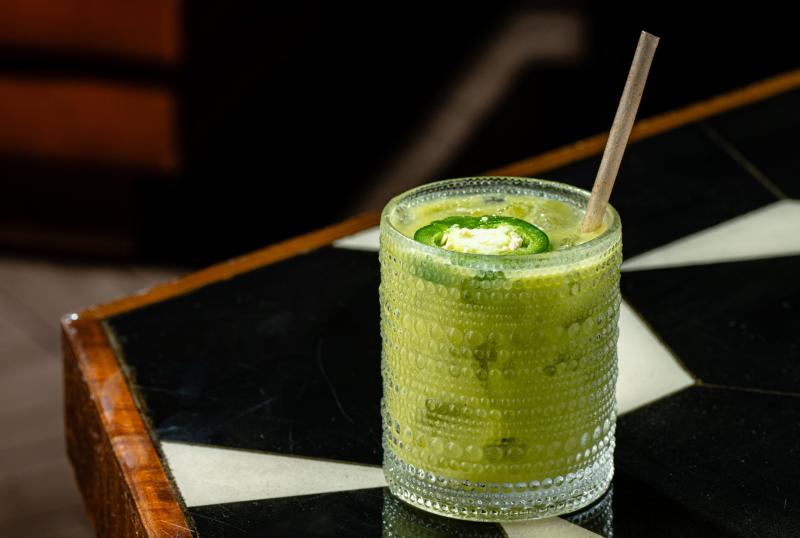
Steve Groom, bar manager at Costera in New Orleans, said some of the more interesting cocktail innovations are coming out of Asian bars today.
“I had the opportunity to travel to Vietnam before the pandemic struck and was blown away by the cocktail culture in Ho Chi Minh City and Hanoi,” shared Groom. “Not only was there a parallel between gin and tonics popular in both Spain and the U.S, but so many unique takes utilizing common ingredients to Southeast Asia that may not be as familiar to Western palates. Playing around with an ingredient like pandan leaf might seem exotic to some, but often, walking through the aisles at the Hong Kong market on the West Bank offers inspiration that we don't find at other supermarkets in New Orleans.”
While Groom said Spanish drinking traditions play a starring role in Costera's curated cocktail menu, their newest house cocktail borrows from the flavor palette of the new world. “Our ‘Smells Like Tajín Spirit’ combines Tajín-infused Mezcal with blanco tequila, elote liqueur, sugar, and fresh lime juice,” he said. “Infused in Oaxacan mezcal, Tajín offers earthy, salty, spicy nuance to the spirit, and a little goes a long way. “We cut this with the blanco tequila, sugar, lime, and elote liqueur, adding the richness and depth of caramelized, roasted maize. Sweet, salty, spicy, tart, and even slightly bitter are brought into equilibrium.”
Maxwell Reis, the beverage director at Mírate in the Los Angeles area, said all of the cocktails on their menu are culinary inspired, and some of their most interesting cocktail flavors and ingredients at the moment include fermented meat marinade, huitlacoche (or corn smut), goat’s milk, and mazapán.

“I'm excited to keep experimenting with items like shellfish in cocktails, which is common in many Mexican beverages, and bolstering savory flavors with items like MSG,” said Reis. “I'm especially excited for the integration of items like pulque and pulque vinegar on our upcoming menu.”
At Mr. Melo in Brooklyn, they’re using passion fruit, eggplant, tamarind, and feta in their culinary cocktails. “People want the essence of the food they would be eating in liquid form, while also getting loose at the same time,” said Nikolas Vagenas, co-owner of the new bar.
Mr. Melo’s John Dough cocktail is a clarified, vegan cocktail made with oat milk, “So it stands out compared to most clarified cocktails,” said Vagenas. “The process to make it takes about a week in total from curdling the milk to straining out the wheys, to then force carbonating the cocktail.”
The bar’s Baba Rita takes leftover smoked eggplant skins and further chars them by adding overproof booze and lighting it aflame. “After the skins cool, we use an immersion circulator to infuse the skins in tequila for three hours,” said Vagenas.
Over in San Francisco at Aphotic, the entire basis of their cocktail program is culinary driven, according to Bar Director Trevin Hutchins.

“We have a cocktail called Bird on our menu that’s very popular,” said Hutchins. “It uses locally grown avocado and passion fruit with coconut cream, cucumber-infused cachaça, and a melon aperitif from France.”
Hutchins said he loves spotting seaweed on cocktail menus, and he’s been seeing it more and more. “There are so many varieties, and each type has their own distinct flavor profile and can be used for different applications,” he explained. “Our Aphotic Martini uses a house-distilled seaweed gin, and our Black Sea Old Fashioned uses a garum demerara syrup with black lemon bitters and bourbon for an umami layer to the classic.”
Joseph Cosby, bar manager at Nobu’s Houston and Dallas locations, said they have a few culinary cocktails on their menu, including the MIA Margarita, a passion fruit-based margarita with shichimi. “We also have our Amazurita, which features a savory pineapple-rosemary shrub with rice wine vinegar and Peruvian spices,” said Cosby.
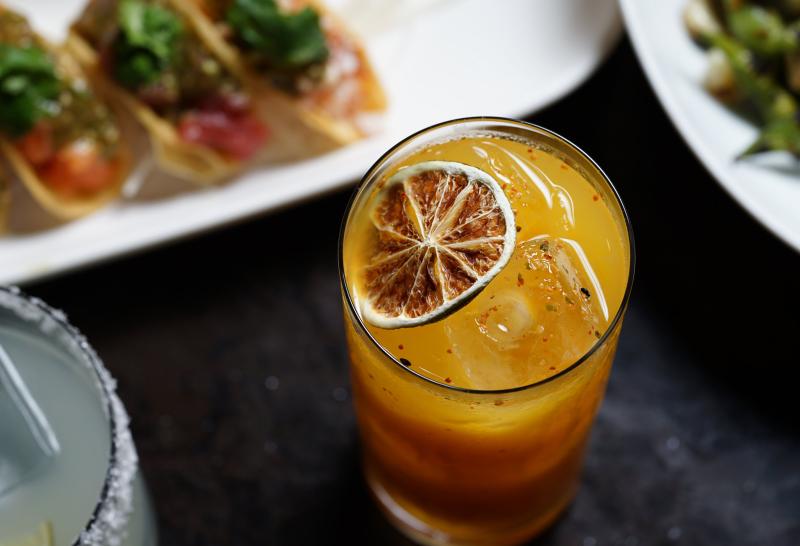
Nobu is also offering a culinary cocktail at its restaurants nationwide; it’s called The Woodsman. The drink features Kikori Whiskey, a toasted rice and ginger syrup, Meyer lemon, and amaro. “The cocktail itself is inspired by a Penicillin, but the toasted rice component really adds body and nuttiness to help round out the cocktail.”
Cosby noted the most popular culinary cocktail is the classic Bloody Mary. “This is the epitome of a culinary cocktail – savory, spicy, and there are endless possibilities with the garnish,” he said. “We actually have a sake-based version that we serve at a few of our properties that offer brunch. We make a Bloody Mary mix with tomato juice, tonkatsu sauce, wasabi, ginger, lime, and shichimi.”
"Different Ingredients Sometimes Create a Magical Experience"
Heather Blanchard, lead bartender at The Pool Club, Virgin Hotels New Orleans, suggested that bar and restaurant operators “experiment fearlessly” when crafting their own culinary cocktail. “The most different ingredients sometimes create a magical experience,” she said, noting that one of their innovative cocktails is the Banana Bread Old Fashioned.
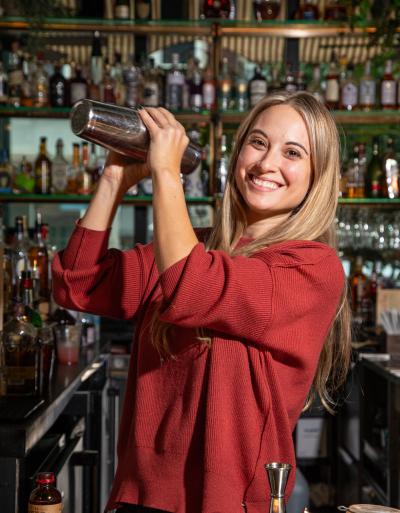
“Guests seek a well-balanced culinary cocktail experience that goes beyond traditional flavors,” added Blanchard.
Jason Harry, the brand experience manager at Still Austin Whiskey Co. in Austin, Texas, advised: “A bartender should create a cocktail with the same focus and intention that a chef creates an entrée,” and that anything light and refreshing is always a good choice with culinary cocktails.

“Citrus will always be popular and things like grapefruit zest, lime zest, and yuzu are all starting to find their places in popular cocktails,” Harry shared. “New-look versions of the Bee's Knees, whiskey sour, and classic daiquiri are all classic cocktails regaining prominence in the bar scene by incorporating new and interesting ingredients… Herbal and Eastern flavors are very popular and have been for the past few years.”
Karl Goranowski, the beverage director for Tucson, Ariz.-based Fenton Family Restaurants – which includes Reilly Craft Pizza + Drink, BATA, BarBata, Tough Luck Club and Fentonelli’s Pizzeria + Bar – believes that culinary cocktails are worth it.
“Guests recognize the effort that bar teams put in to make cocktails that are delicious and that they can’t execute themselves,” said Goranowski.
Sammi Katz – bartender at The Rockwell Place in Brooklyn, author of Cocktails in Color: A Spirited Guide to the Art and Joy of Drinkmaking, and a member of the United States Bartender Guild – thinks it’s exciting when bars introduce audiences to spirits and ingredients that might be unfamiliar, especially to western palates. Right now, Chinese baijiu, West African palm spirits, and Lebanese arak interest Katz. “I’m always down to try something new,” she said.

Katz noted that she doesn’t have a sweet tooth, and she’d much rather have her dessert in cocktail form; so, a lot of her culinary cocktails mimic flavors in popular desserts. “I think folks are looking for cocktails that are surprising, or bring a certain level of nostalgia,” she said.
Brandon Ristaino, the co-founder and beverage director at Good Lion Hospitality in Santa Barbara, Calif., said there are no limits to cocktail flavor profiles being explored in 2024. The hospitality group consists of several bars, including The Good Lion, Test Pilot, Bank of Italy Cocktail Trust, Shaker Mill, and a natural wine bar, Venus in Furs.
“We've seen some incredible and awesomely weird combos inspired by food pairings via resources like The Flavor Bible and Foodpairing.com,” he noted.
“We've got a few specific cocktails that may be easily recognized as a culinary cocktail,” Ristaino added, “but we believe that contemporary cocktail execution as a whole relies upon ingredients, techniques, mise en place, and procedures historically more prevalent in a kitchen. Balancing flavor components like acid, bitterness, salt, fat, sweet, and similar are philosophies drawn directly from the knowledge of our friends in the kitchen. Additionally, techniques like fat washing, syrup production, sous vide and similar have permeated through the contemporary cocktail world and are techniques we use daily.”
Advice for Those Who Venture into the Culinary Cocktail World
Robert Renfroe, director of F&B at the InterContinental Miami, which features Freddy’s Speakeasy, encourages bar and restaurant operators to involve the chefs when creating culinary cocktails, “to ensure you can get different perspectives.”
“Constantly continue to try and be creative with new ideas,” advised Renfroe. “When you feel you've reached the point where you have created a cocktail that you can be proud of, sell it as a special before deciding to put it on your menu, ask for feedback, and determine if you should make any adjustments before presenting the final product.”
The Head Bartender at BABs in New Orleans, Rick Powanda, said “play around” in the culinary cocktail space.
“See what chefs are doing on their plates,” encouraged Powanda. “See how they are using their food. Watch some cooking shows, read some cookbooks, or watch YouTube – or even Instagram – for inspiration. Just keep playing around, screwing up, and trying again.
David Kasparov, director of beverage at JW Marriott Miami Turnberry Resort & Spa, which features the award-winning Bourbon Steak by Michael Mina, thinks a venue’s culinary cocktail menu should complement its food menu.
“A cocktail list should always be created in partnership with the restaurant menu in mind,” suggested Kasparov. “Don’t be scared to experiment. The current generation is very adventurous and always open to new flavors.”
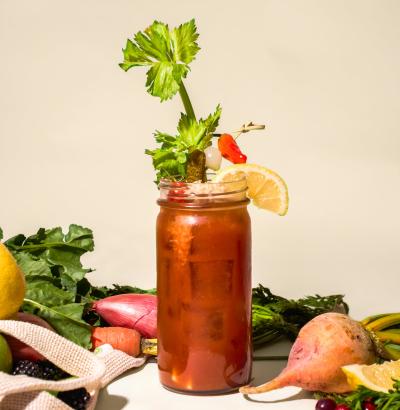
Kasparov added that the non-alcoholic niche continues to grow, so culinary mocktails should be explored, too. “Restaurants and bars are creating a unique zero-proof cocktail list with a price range between $18 to $20,” he said.
In the end, Paul Kushner said creating the perfect culinary cocktail is all about experimentation. Kushner owned a pub in Southampton, Pa. for more than 10 years before moving on to mixology and recipe development with MyBartender.
“My advice for anyone looking to create an excellent culinary cocktail is just trial and error,” said Kushner. “Just try different things, even if you don’t think it will taste good. I have found that sometimes a recipe I think will taste good ends up not being as good as I imagined in my head, and conversely the least expected recipe ends up being the winner. You just never know!”
Timothy Parker, the beverage director at Electric Hospitality, including Electric Events, Ranger Station, Ladybird Grove & Mess Hall, and Muchacho, based in Atlanta, Ga., summed it up when it comes to creating culinary cocktails: “Freak it. Do the weirdest, wildest stuff you can imagine... and then tell me so I can try it.”
Aaron Kiel is an editor, writer and public relations professional in Raleigh, N.C. He’s worked in the beverage, tea and coffee industries for two decades, as well as hospitality and technology. He’s a journalist at heart, but he also wears a PR and communications hat through his consultancy, ak PR Group. He’s a contributing writer/reporter for Questex’s Bar & Restaurant News, and he recently worked as the editor of World Tea News with Questex’s Bar & Restaurant Group. In 2023, he was a finalist and honorable mention in the “Folio: Eddie & Ozzie Awards” for Range of Work by a Single Author – B2B.” Connect with him on Instagram: @adventurer_explorer.
Are you registered for our Crave and Crave on the Menu newsletters? Sign up today!
Plan to Attend or Participate in the 2024 Bar & Restaurant Expo, March 18-20, 2024
To learn about the latest trends, issues and hot topics, and to experience and taste the best products within the bar, restaurant and hospitality industry, plan to attend Bar & Restaurant Expo 2024 in Las Vegas.
To book your sponsorship or exhibit space at the 2024 Bar & Restaurant Expo, contact:
Veronica Gonnello (for companies A to G) e: [email protected] p: 212-895-8244
Tim Schultz (for companies H to Q) e: [email protected] p: 917-258-8589
Fadi Alsayegh (for companies R to Z) e: [email protected] p: 917-258-5174
Also, be sure to follow Bar & Restaurant on Facebook and Instagram for all the latest industry news and trends.
